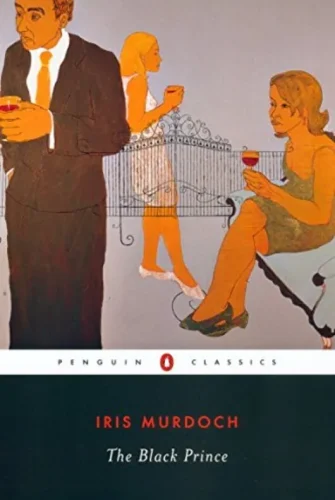The Bottom, predominantly a Black community nestled in the hills above the wealthy, predominantly white zone of Medallion, Ohio, was cunningly granted to a former slave by his owner, who tricked him into believing the hilly land was a gift due to its closeness to heaven. Despite the deception, the region thrived into a bustling community. Presently, affluent white individuals have set their sights on the land, threatening to demolish the community in favor of a golf course. Shadrack, a war veteran living there, grapples with post-war adaptation and invents ‘National Suicide Day’ as a coping mechanism for his fear of death, which the town eventually embraces. The narrative juxtaposes the lives of two companions, Nel and Sula, hailing from different backgrounds. Nel is brought up in a strict, traditional household by her mother Helene but questions the rigid lifestyle upon meeting her unconventional grandmother Rochelle, a former sex worker. Sula’s family, however, is perceived as peculiar and promiscuous by the townsfolk due to the behaviors of her mother, Hannah, and grandmother Eva.
Their abode also acts as a residence for three boys and assorted lodgers. Despite their disparities, the girls forge a deep connection during their adolescent years. Nevertheless, their bond is put to the test when a tragic incident unfolds, resulting in the drowning of a local boy during a game initiated by Sula. They keep their involvement in the accident hidden and gradually grow apart as Sula’s mother perishes due to fatal burns from a dress fire. After high school, Nel conforms to societal norms, marrying and becoming a mother.
Conversely, Sula leads a life of bold independence and open defiance of societal conventions, departing the Bottom for a decade and engaging in multiple liaisons, including with white men. Upon her return, she is demonized as wicked, particularly after engaging in an affair with Nel’s spouse, Jude, who subsequently deserts Nel. Ironically, her presence unites the community. A strained reconciliation unfolds between Nel and Sula before the latter’s demise in 1940. The harmony in the Bottom disintegrates with her passing. By 1965, the specter of a golf course looms. Nel, visiting Eva in a nursing facility, is accused of complicity in the drowning of the local boy. This accusation prompts Nel to reassess her judgment of Sula and acknowledge that she had too quickly adhered to societal dictates to claim moral ascendancy. The tale delves into themes of ethics, connections, race, and gender, eschewing simplistic resolutions and underscoring the intricacy and uncertainty of life.

prelude
The Bottom, originally an entirely Black neighborhood perched in the hills above Medallion, Ohio, undergoes profound transformation as affluent white individuals encroach. The edifices, once the core of a vibrant African-American community, are razed to pave the way for a golf course. According to local legend, the Bottom acquired its moniker when a manipulative slave owner duped a slave into believing he would secure freedom and fertile ‘bottom land’ if he completed arduous tasks. Instead, the slave owner granted him a parcel of land on the hills, deceptively labeling it the ‘bottom of heaven’ as it was nearer to God. The slave accepted this ‘gift’, only to realize later that the land was challenging to cultivate. In 1917, Shadrack, a 20-year-old war veteran, undergoes a disconcerting ordeal during World War I. Awakening in a veterans’ hospital, he is alarmed to witness his hands enlarging and grapples with a male nurse who tries to feed him. Subsequently restrained in a straitjacket, which he finds comforting since he no longer has to behold his hands. Though yearning to view his visage, he’s hindered by his incarceration. Released from the hospital a year later due to space constraints, Shadrack is apprehended upon being discovered crying by the roadside. In his cell, he validates his existence by peering at his reflection in the toilet basin. Later, he is returned to the Bottom with a farmer. Plagued by the dread of sudden demise, Shadrack establishes National Suicide Day on every January 3rd as a mechanism to confront his anxiety. Initially perturbing to residents, this custom ultimately assimilates into their routine. Helene Wright, offspring of a Creole prostitute named Rochelle, was reared by her devout grandmother, Cecile. Wedded off at 16 to Wiley Wright, Cecile’s great-nephew, they lead a respectable life in the Bottom. Nine years into marriage, they beget a daughter, Nel, whom Helene raises following stringent regulations. During Cecile’s ailment, Helene readies for a journey to New Orleans for the interment. Despite her elegant garb, she faces humiliation by a bigoted train conductor. Arriving in New Orleans, she’s disconcerted to encounter Rochelle at Cecile’s residence. Nel’s fleeting interaction with Rochelle leaves a profound impact.
1921
Eva Peace, forsaken by her husband BoyBoy, subsists on the benevolence of her neighbors while tending to her three offspring. Her infant son Plum, afflicted with a life-threatening intestinal condition, is rescued when Eva manually alleviates his constipation. Unexpectedly, Eva entrusts her children with a neighbor, Mrs. Suggs, assuring her swift return. Upon reappearing after a year and a half, she’s now mysteriously affluent but sans a leg. Rumors circulated that she bartered her limb for insurance funds. On BoyBoy’s brief return, seemingly affluent, Eva harbors no animosity. He shows no interest in the children, departing with his urban-dwelling paramour. Eva anticipates the deep-seated aversion she’ll nurture toward him. Utilizing her unexplained resources, Eva constructs a grand residence where she dwells as a dignified matriarch with her daughter and granddaughter, Hannah and Sula. The abode also accommodates three adopted boys, all christened Dewey and a revolving door of tenants. The Deweys foster a bond and commence schooling together despite the variance in their ages. Additionally, a white inebriate, Tar Baby, lodges in the residence. Both Hannah and Eva relish male companionship. While Eva flirts yet abstains from carnal relations, Hannah freely indulges in liaisons but shuns enduring commitments. Upon Plum’s return from World War I, he appears a shadow of his former self, tormented by warfare and grappling with heroin addiction. One night, Eva suffocates him in kerosene and immolates him.
1922
Nel and Sula, contrasting in temperament, form a friendship: Nel exudes restraint and discretion, while Sula manifests impulsivity and assertiveness. Viewing themselves as complementary halves of a whole, their blossoming physiques capture the interest of Ajax, who disparagingly remarks, “pig meat.” A group of Catholic boys torment Black children, with Nel becoming their focal point. To evade these boys, Nel and Sula commence taking an alternative route home from school. Upon a confrontation with the boys once more, Sula brandishes a knife and shears off the tip of her finger as a deterrent. This act instills fear in the boys, prompting their retreat. Unexpectedly, Sula overhears her mother Hannah…disliked her. Chicken Little, a boy nearby, comes across Sula and Nel during their alone time. As Nel mocks him, Sula steps in to shield him. Playfully, Sula spins him around by his hands, but he accidentally slips, plunging into a river, causing his demise. Sula seeks solace from Shadrack, inadvertently abandoning her dress’s belt. Nel stays composed and reassures that no one saw the incident. They collectively agree not to disclose the mishap to anyone. Chicken Little’s remains are found by a bargeman. The white authorities show apathy towards the death of the black boy; one even proposes dumping the body back into the water. Sula and Nel attend Chicken Little’s funeral. While Nel, burdened with remorse, remains silent, Sula openly weeps, devoid of any guilt.
1923–1927
A fierce windstorm devastates the Bottom, uprooting trees and leading to an intense heatwave. Hannah queries Eva about her affection for her children, provoking Eva. She argues that her effort to provide for their basic necessities left no space for playful warmth. When Hannah inquires about Plum’s passing, Eva collapses, revealing that Plum had regressed to a childlike state, recalling a past when his life was imperiled by a severe bowel ailment. Hannah has a vision of a crimson bridal gown, which she shares with Eva. Nonetheless, Eva is preoccupied with Sula, displaying typical teenage behavior. Eva witnesses Hannah’s dress catching fire from her window and leaps out to extinguish the flames with her body. The Suggs family manages to douse the fire, but Hannah sustains severe injuries, succumbing later at the hospital. Eva survives, thanks to Old Willy Fields, an orderly, whom she later resents for rescuing her. Eva believes Hannah’s dream forewarned of her fiery demise and recalls seeing Sula observing the gruesome scene with apparent interest. Jude Greene, a 20-year-old server at Hotel Medallion, harbors ambitions for a more masculine occupation. On hearing of a new road construction venture, he aspires to participate, but his hopes are dashed when only whites are selected. To fulfill his desire for manhood, he proposes to Nel. Following her graduation, they wed in a lavish ceremony. Nel, influenced by her mother’s traditional perspectives after the tragic loss of Chicken Little, willingly embraces the role of a subservient wife. After the nuptials, Sula leaves for college and is gone for a decade.
1937
Upon Sula’s return to Bottom, her opulent attire and the sudden arrival of a “plague of robins” astound the locals. She visits Eva, leading to a swift clash over Sula’s single status. In retaliation to Eva’s censure, Sula brings up Eva’s self-harm for insurance money. When Eva implies that Sula was neglectful as a daughter, Sula counterattacks by accusing Eva of being responsible for Plum’s demise. Sula even threatens to harm Eva as she believes Eva did to Plum. Terrified, Eva begins locking her door every night. Subsequently, Sula assumes the role of Eva’s caregiver and transfers her to a nursing home, causing a commotion in the vicinity. Despite labeling Sula as wicked, she confesses to Nel that her actions were driven by fear of Eva. Sula and Nel start to reconnect. A quarrel erupts between Jude and Sula when he returns home one day, leading to an affair. Nel inadvertently uncovers her husband’s infidelity with her best friend, prompting Jude to depart from Nel and their children. Left heartbroken by the betrayal of her husband and friend, Nel finds herself devastated.
1939
The townspeople ponder over the swarm of robins preceding Sula and the story of her response to Hannah’s tragic accident. They deduce that the birthmark on Sula’s eye embodies Hannah’s ashes. The revelation of her intimacy with white men horrifies them further. Blaming her for random calamities in the town, they attribute Mr. Finley choking to death on a bone upon seeing Sula as a result of her presence. Accused of causing Teapot, a neglected child, to fall from her porch by accident, the townsfolk unite against the perceived malice, intensifying their efforts to lead righteous lives. Sula’s various liaisons are fleeting. Unknown to her, she engages in sexual encounters due to the resulting vulnerability and melancholy. Ajax, drawn to her capricious nature, treats his lovers kindly, sparking rivalry among them. Engaging in a fervent romance, he and Sula revel in each other’s autonomy. Sula, for the first time, yearns to possess her lover. However, upon sensing her domestic aspirations, Ajax terminates their relationship, leaving Sula shattered by his departure.
1940
Stricken by a severe illness, Sula receives a visit from Nel, who hasn’t seen her in three years. Offering assistance, Nel receives a request from Sula for a pharmacy visit. A discussion ensues regarding why Sula was involved with Jude, leading to a discourse on ethical standards and obligations. Sula challenges Nel’s belief that black women cannot stand alone and be self-sufficient. Drawing a parallel between the women she knows and “stumps” slowly withering, she likens her circumstance to the downfall of a redwood. Sula asserts her solitude is genuine, contrasting it with Nel’s “secondhand” isolation. According to Sula, Jude merely occupied a space in her mind. Leaving Nel with a question of who truly embodied virtue. In immense agony, Sula reflects on her history. Recalling the exhilaration of witnessing her mother ablaze, she ponders that all emotions, actions, and words are merely “something to do.” Curling up and sucking her thumb, she realizes abruptly that her heart is motionless, and she doesn’t breathe. Acknowledging her demise, she eagerly anticipates informing Nel that death is devoid of suffering.
1941–1965
Initially perceived as a positive omen by the Bottom community, Sula’s death prompts their attendance at her funeral to confirm her passing. Expectations of job opportunities for black laborers and the introduction of a racially inclusive nursing home uplift the community. However, tragedy strikes as a severe frost decimates crops and livestock, plunging the community into an economic crisis compounded by illness and societal disarray. The harsh weather eases by New Year’s Eve. Shadrack, the war veteran, experiences loneliness for the first time since his return. Recalling a young girl who once comforted him during his service, bearing a birthmark resembling one on Sula’s body, Shadrack questions the impermanence of things. Despite this change in perspective, Shadrack persists with his National Suicide Day tradition. Many from the Bottom community join him in a protest at the construction site, resulting in a fatal accident claiming several lives, including the Deweys. Fast forward to 1965, Nel contemplates the transformations witnessed over the years, such as the Bottom community’s migration to Medallion City. Despite improved work prospects, she misses the communal spirit they once shared. Lonely without her children and Jude, Nel feels adrift. A visit to Eva in a nursing home brings not solace, but a startling accusation that Nel and Sula were equally culpable for Chicken Little’s death. This revelation disturbs Nel, compelling her to confront her guilt. Finally, at the cemetery where Sula rests, Nel pays her respects. Leaving the cemetery, she encounters Shadrack, who struggles to recognize her. Overwhelmed by grief, Nel calls out for her departed friend, Sula.


